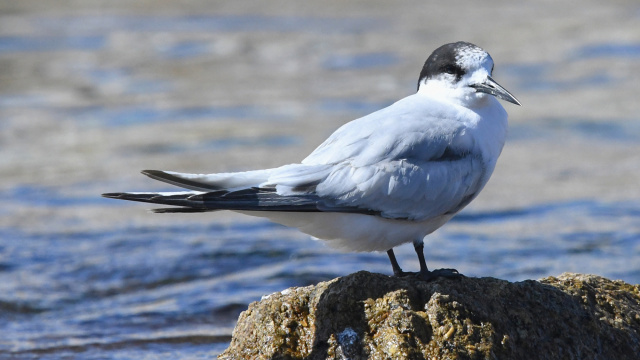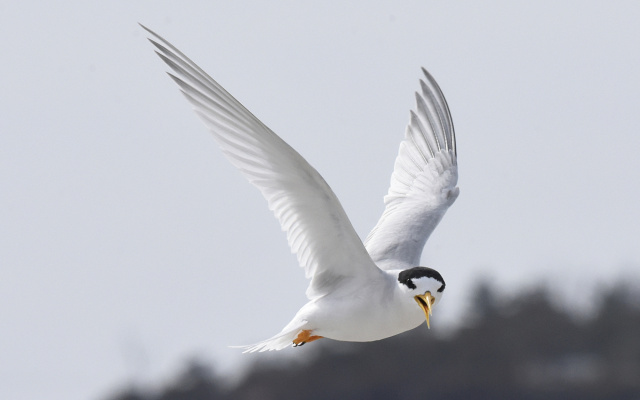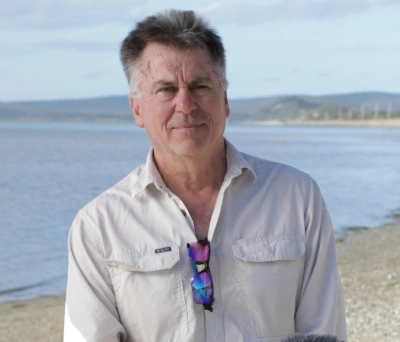Pushing species closer to brink of extinction
We really have to do much, much better...
Commercial interests drive the extinction timetable for many species worldwide. In Tasmania, the Swift Parrot and Maugean Skate are perhaps the best and most current examples of this devastating relationship. Sadly, they are by no means isolated. Australia is in the midst of a well- documented and widely- acknowledged extinction crisis. A recent Australian Senate Enquiry confirmed the ongoing loss of our previous wildlife and native habitats continue unabated. For more than 40 years, we have known that habitat loss and fragmentation are the primary drivers for the ever- lengthening list of threatened species on Federal and State lists.

Despite knowing what the threats are and how to respond appropriately to eliminate, or at least minimise the threats, instead the business as usual approach continues to run amok, destroying habitats with nil concern for the future or for the environment. Resistance by the various industries aim to deflect the required efforts to address the threats, and are often complemented by claims that the "science" is unclear" or that the science is, "open to debate", when in fact the science has been clear for decades. Evidence-based and data-driven management are fundamental to ecologically sustainable land use. The government and land managers could ever-increasing numbers of Threatened species on State and Federal lists are clear signals that our land use and land management practices are failing to conserve our biodiversity. The science is clear and unequivocal. Clearly, it's time for a rethink of our relationship with our land and waters. We ignore the evidence at our peril. The 2024 Tasmania State of the Environment Report provided a confronting snapshot of the loss of Tasmania's species and their habitats. The report clearly detailed the poor state of Tasmania's alpine to coastal and marine habitats.
There were no actions to address the ongoing loss of critical habitats statewide, or to address the ever increasing numbers of threatened species.

With just three of 29 indicators assessed to be in "good" condition, the message to government and land managers could not be clearer: we really have to do much much better. Ignoring the unequivocal message and overlooking the science, the Tasmanian Government's tepid response to the widespread environmental losses by promising a, "more sustainable Tasmania" defies belief and denies the reality on the ground. Ignoring the evidence is indefensible.
There were no actions to address the ongoing loss of critical habitats statewide, or to address the ever increasing numbers of threatened species. The lack of an appetite to reduce the rates of habitat clearing and loss throughout the state has profound and permanent consequences. The numbers of threatened species and communities can be predicted- with high confidence to increase. The response reflected a politically "sustainable" strategy, and most certainly one that was not ecologically sustainable.
Far too often we hear politicians declaring the need for, "balance" and, "compromise" when dismissing environmental issues at the first opportunity. For threatened species, "balance" and "compromise" are no longer options given their proximity to extinction.
"Balanced" efforts and "compromise" strategies ensure the threats species face on a daily basis threatened species continue unabated, pushing species ever closer to the precipice of extinction.

Ongoing commercial activities remain unbalanced, heavily skewed towards favouring commercial profits over the environment. There is only one beneficiary in such "compromises" and it is never the environment. Business as usual is not an option for threatened species - we really have to do much, much better.
A recent study showed that species with small distributions predictably face the highest extinction risks, with ongoing habitat fragmentation likely to result with the extinction of those species. This model is particularly true in Tasmania where our most precious species-the endemics found nowhere else on the planet-continue to experience rapid habitat losses statewide. Habitat losses on a small island such as Tasmania magnifies the risk. Intact habitats will serve as refugia for species as climate change accelerates. It is critical to maintain existing habitats, now and into the future. Our current efforts will leave a shocking and indefensible legacy to future generations, denying them the diversity of wildlife and habitats that we are currently destroying.
There is no excuse for such a legacy; assertions of "balance" and "compromise" ring hollow in the face of species' extinctions. We really have to do much, much better.

Dr Eric Woehler
We really have to do much, much better...
Commercial interests drive the extinction timetable for many species worldwide. In Tasmania, the Swift Parrot and Maugean Skate are perhaps the best and most current examples of this devastating relationship. Sadly, they are by no means isolated. Australia is in the midst of a well- documented and widely- acknowledged extinction crisis. A recent Australian Senate Enquiry confirmed the ongoing loss of our previous wildlife and native habitats continue unabated. For more than 40 years, we have known that habitat loss and fragmentation are the primary drivers for the ever- lengthening list of threatened species on Federal and State lists.

Despite knowing what the threats are and how to respond appropriately to eliminate, or at least minimise the threats, instead the business as usual approach continues to run amok, destroying habitats with nil concern for the future or for the environment. Resistance by the various industries aim to deflect the required efforts to address the threats, and are often complemented by claims that the "science" is unclear" or that the science is, "open to debate", when in fact the science has been clear for decades. Evidence-based and data-driven management are fundamental to ecologically sustainable land use. The government and land managers could ever-increasing numbers of Threatened species on State and Federal lists are clear signals that our land use and land management practices are failing to conserve our biodiversity. The science is clear and unequivocal. Clearly, it's time for a rethink of our relationship with our land and waters. We ignore the evidence at our peril. The 2024 Tasmania State of the Environment Report provided a confronting snapshot of the loss of Tasmania's species and their habitats. The report clearly detailed the poor state of Tasmania's alpine to coastal and marine habitats.
There were no actions to address the ongoing loss of critical habitats statewide, or to address the ever increasing numbers of threatened species.

With just three of 29 indicators assessed to be in "good" condition, the message to government and land managers could not be clearer: we really have to do much much better. Ignoring the unequivocal message and overlooking the science, the Tasmanian Government's tepid response to the widespread environmental losses by promising a, "more sustainable Tasmania" defies belief and denies the reality on the ground. Ignoring the evidence is indefensible.
There were no actions to address the ongoing loss of critical habitats statewide, or to address the ever increasing numbers of threatened species. The lack of an appetite to reduce the rates of habitat clearing and loss throughout the state has profound and permanent consequences. The numbers of threatened species and communities can be predicted- with high confidence to increase. The response reflected a politically "sustainable" strategy, and most certainly one that was not ecologically sustainable.
Far too often we hear politicians declaring the need for, "balance" and, "compromise" when dismissing environmental issues at the first opportunity. For threatened species, "balance" and "compromise" are no longer options given their proximity to extinction.
"Balanced" efforts and "compromise" strategies ensure the threats species face on a daily basis threatened species continue unabated, pushing species ever closer to the precipice of extinction.

Ongoing commercial activities remain unbalanced, heavily skewed towards favouring commercial profits over the environment. There is only one beneficiary in such "compromises" and it is never the environment. Business as usual is not an option for threatened species - we really have to do much, much better.
A recent study showed that species with small distributions predictably face the highest extinction risks, with ongoing habitat fragmentation likely to result with the extinction of those species. This model is particularly true in Tasmania where our most precious species-the endemics found nowhere else on the planet-continue to experience rapid habitat losses statewide. Habitat losses on a small island such as Tasmania magnifies the risk. Intact habitats will serve as refugia for species as climate change accelerates. It is critical to maintain existing habitats, now and into the future. Our current efforts will leave a shocking and indefensible legacy to future generations, denying them the diversity of wildlife and habitats that we are currently destroying.
There is no excuse for such a legacy; assertions of "balance" and "compromise" ring hollow in the face of species' extinctions. We really have to do much, much better.
You might like...
The Dartford Warbler
An endangered species, this ground-nesting bird makes its home amongst the thick heather.
Forty-spotted Pardalote
One of the world's rarest birds, the Forty-Spotted Pardalote's remaining stronghold is on Bruny Island and Maria Island, off Tasmania
Pied Oystercatcher
The Pied Oystercatcher is a large wading shore-bird with a black face, back and chest, a white belly, white tail with black band at its end and a white wing-bar visible when flying. Its beak is a bright orange.
Black Currawong
The currawong is a bird found only in Tasmania, frequents forests, and is a glossy all-black colour with a heavy black bill, small white tip to its tail and wingtips, and bright-yellow eyes.
Newsletter
Sign up to keep in touch with articles, updates, events or news from Kuno, your platform for nature
